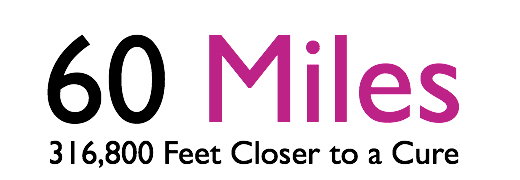Lisa will tell you that she is not a survivor yet. She’s still going through chemo and is on her way to being a survivor but she won’t accept that title yet. This is my interview with Susan G. Komen 3-Day for the Cure walker Lisa Koenigsberg. We talked about her fight with breast cancer as well as what it means to sign up as a walker in the 3-day when you are going through breast cancer treatment.
Interview With 3-Day for the Cure Walker Lisa Koenigsberg
April 12th, 2010 | Posted by in Interviews - (Comments Off on Interview With 3-Day for the Cure Walker Lisa Koenigsberg)A lot of first time walkers (I did this too when I was a first time walker) will ask, “I don’t really need to do that much training do I? I’m active and in shape, it shouldn’t be too hard to do this.” In my first year I trained, but not nearly as much as I should have. I just felt like I could keep going on and on forever and it didn’t matter the mile count. True, I did finish, but my feet were in terrible shape and I was incredibly sore for more than a week after the event. After that, I realized that all the training walks that you do going up to the 3-Day for the Cure are not just so you can have done so many miles and be better prepared to just go the difference, in my mind there are actually three reasons (other than walking long distances) to do as much training as you can before the event. Here they are.
Pay Attention to Your Feet
The largest benefit that I think I got out of doing the many training walks was to learn how to pay attention to my feet. When you haven’t done a lot of walking, you don’t necessarily know that the right hand ball of your right foot tends to get hot spots and blisters. Knowing that, you can make sure to tape that section of your foot up before you start walking and have it not become a problem. It also means that when you’re out walking and you start to feel something different on your foot, you know that it’s a problem because you’re aware of what your feet should feel like after walking 6,12, or 18 miles.
Directly hand in hand with this is how to take care of your feet when you know there is a problem. There are lots of things that people will do to help out their feet. I use NexCare tape, but lots of other people use moleskin, Vaseline, body glide, blister band aids and much more. You won’t know what works for you unless you get out there, train, and experience the foot problems that you are likely to get on the walk.
Don’t Be So Callous
Actually, that’s not true. You need to be callous. In fact, being callous is reason number 2 for doing the training walks. As you do these many miles leading up to the walks, your feet are going to build up callouses. A lot of people have already said this in many places, but it bears repeating. Don’t go get a pedicure and scrape off the callouses that you have trained to build up. Callouses will help prevent blisters and you want to have them around for the walk.
Pace Yourself
I didn’t really realize this last reason to do training walks until the third year that I walked. Training with different paces is important. When you do the 3-Day for the Cure, you are going to be walking with thousands of other people. There are times when those people will not walk as fast as you want to go. There will be times when you walk slower. There is no right pace for walking 60 miles, but when you get among those other people and adrenaline takes over you will some times end up walking faster than you are used to. This can end up hurting muscles and also cause unnecessary blisters (as if there is a necessary blister) because you are walking at a pace you haven’t trained at and your body is moving in a way it is unaccustomed to in order to keep up.
To try and avoid some of the problems with this, you need to train at different paces. One day, you might go all out as fast as you can for an extended period, one day you might walk very slow. The key is to get used to training at multiple paces so that when you get excited that you met someone new and want to walk with them, you don’t kill yourself going their pace. If you look at the training walk plan that the 3-Day for the Cure provides you, you will see that they also recommend training at different paces.
So in answer to the question of “do I have to do all these training walks?” No, you don’t, but the more that you do, the better you will feel during and after your 60 miles. And let’s face it, it’s a lot more fun to walk into closing ceremonies than to hobble into closing ceremonies.


